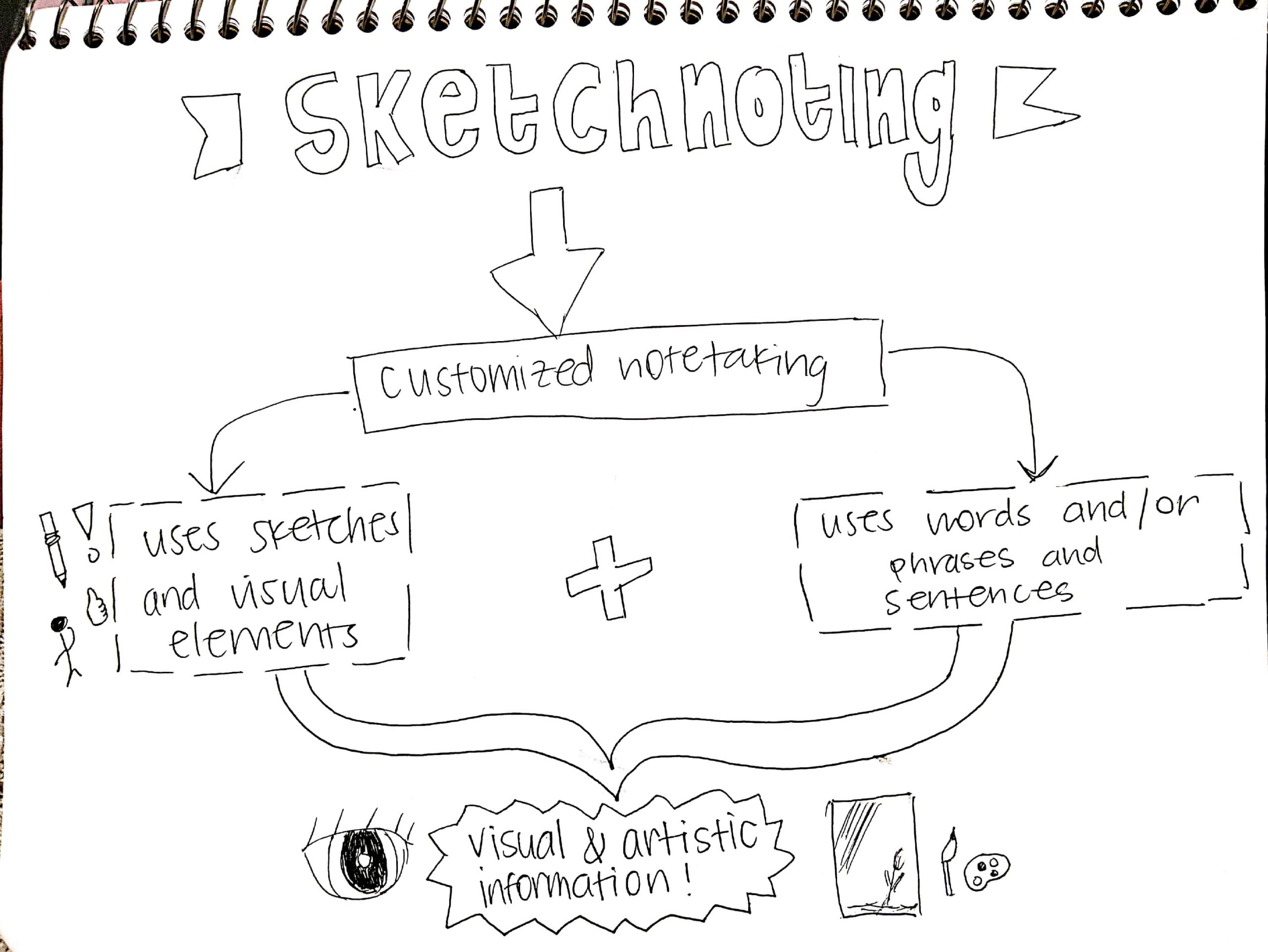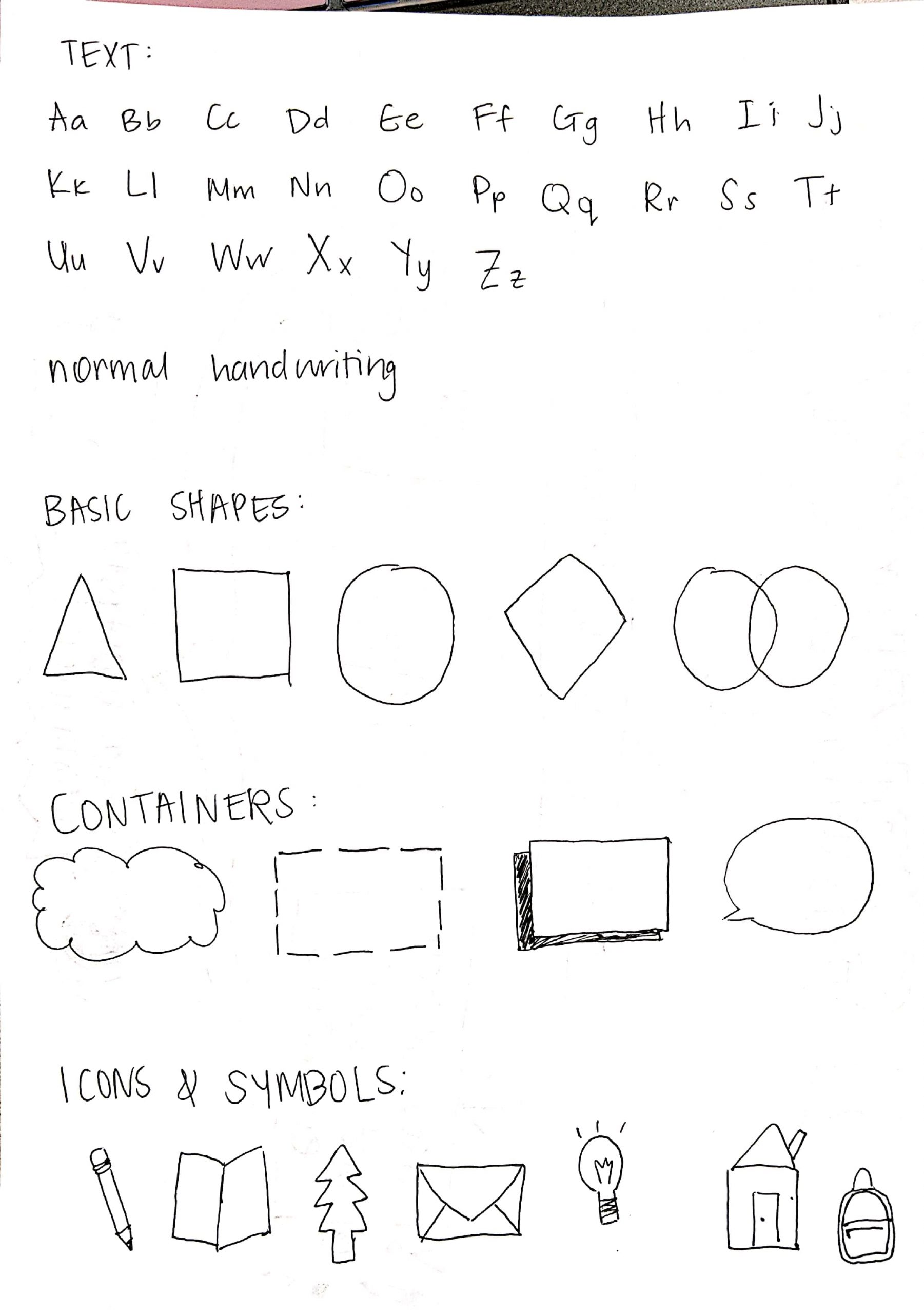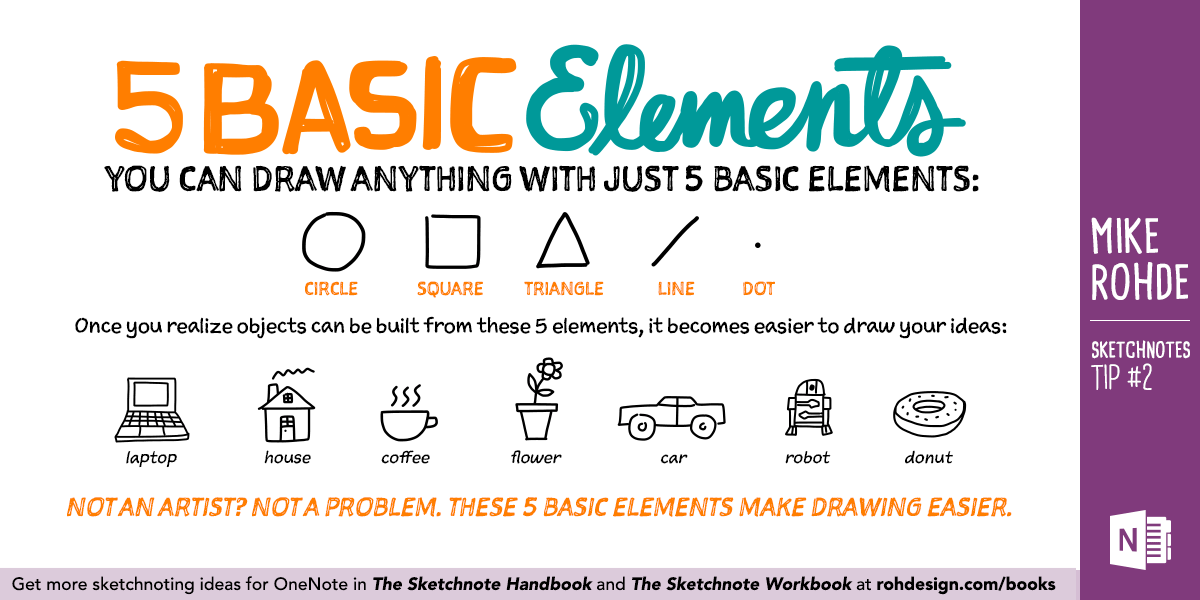2.3 Visual Language & Sketchnoting
Expressing Ideas Visually
Let’s explore what it means to visually express it. In order to think visually, you need to have the equivalent of visual “letters”, words, and vocabulary to express your ideas visually. Often, we rely on written words to document or capture our thinking. But how might you express your thoughts and ideas visually?
Consider
- In what contexts do you typically take notes? In class? At work?
- In which of these contexts would a sketch note be a potential option?
While some people may think this requires exceptional drawing or artistry skills, that is incorrect. Anyone can express themselves visually and the best way to start practicing this is to start using a combination of text and “visual images” whenever you take notes or are jotting down ideas. Keep in mind that, much like handwritten notes, these “visual images” are not intended for broad consumption (or even viewing) by others. Rather they simply capture your ideas or perceptions using a visual icon, doodle, sketch, or basic drawing. This practice is commonly referred to as sketchnoting. Sketchnoting, also commonly referred to as visual notetaking, is the creative and graphic process, where people record their thoughts by using illustrations, symbols, structures, and texts (see example below).

Watch How to Sketchnote without Drawing (12 mins) on YouTube
Video source: Verbal to Visual. (2015, January 30). How to sketchnote without drawing [Video]. YouTube. https://www.youtube.com/watch?v=oNQJReku9Gw
In general, by engaging in visual notetaking, you can enhance your own learning, become a better problem solver, and better connect and share ideas.
In the following image, you will see that by combining handwritten text, basic shapes, containers, and many icons or symbols, it is possible to build a visualization that communicates your ideas and concepts much more clearly and with fewer words / text. And, remember that our brains are programmed to consume information visually. So, not only will this help you, but it will also be easier for others, regardless of their native language, to understand, as well!

Surprisingly, most elements can be drawn using 5 basic drawing elements (see image below):

- Circle
- Square
- Triangle
- Line
- Dot
If you want some inspiration on how to hand-draw icons or symbols, you can either perform a Google image search on any term (concept, product, etc.) plus the word “icon”, e.g., “ad impression icon”, or you can watch Bullet Journal / Planner Icon Doodles | Doodle with Me (19 mins) on YouTube:
Video source: Doodles by Sarah. (2015, March 26). Bullet journal / Planner icon doodles | Doodle with me [Video]. YouTube. https://www.youtube.com/watch?v=o1zdgGGUtNo
In order to create better visual stories, you will need to practice using visual language yourself. Visual notetaking is a great way to practice for yourself and to begin thinking much more visually. Beyond thinking visually, it is essential to also understand how your visual stories can deliver value to your target audience, which brings us to our next topic – target markets and audiences.
Key Takeaways
Visual storytelling is an engaging way to share stories, ideas, and values.
- In order to tell stories visually, it is important to have a “visual language”.
- Sketchnoting is great way to train yourself to start thinking more visually and in visual metaphors.
- Sketchnoting may only be for your own consumption, but can be used to draft ideas and explore visual ways to present visual stories and ideas.
Attribution & References
Except where otherwise noted, this page is adapted from Visual Language and Sketchnoting In Foundations in Digital Marketing by Rochelle Grayson, CC BY 4.0

